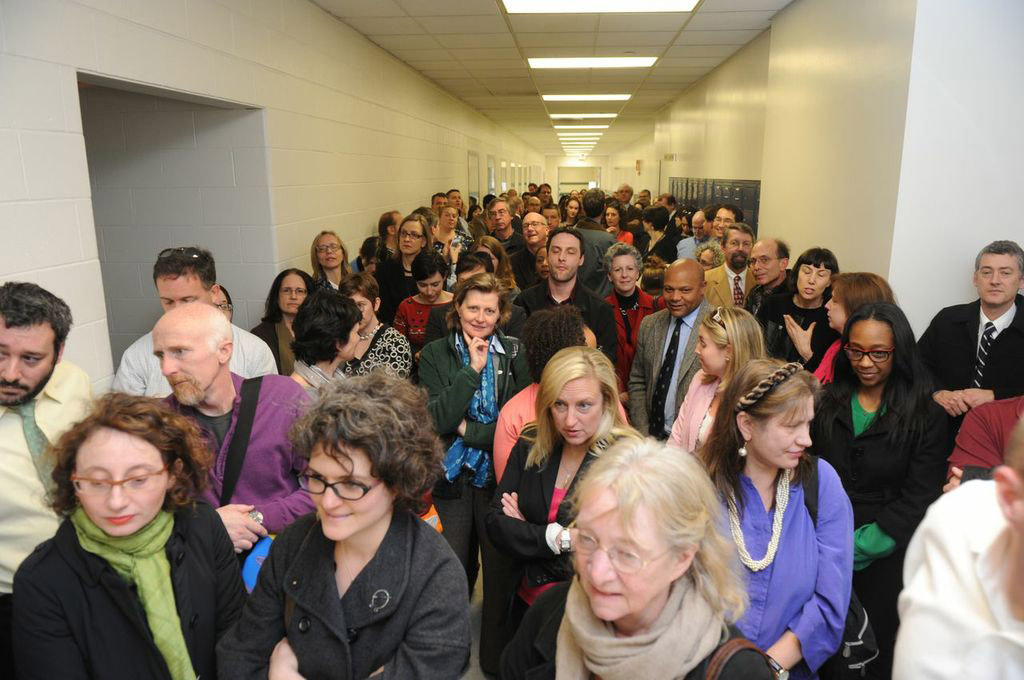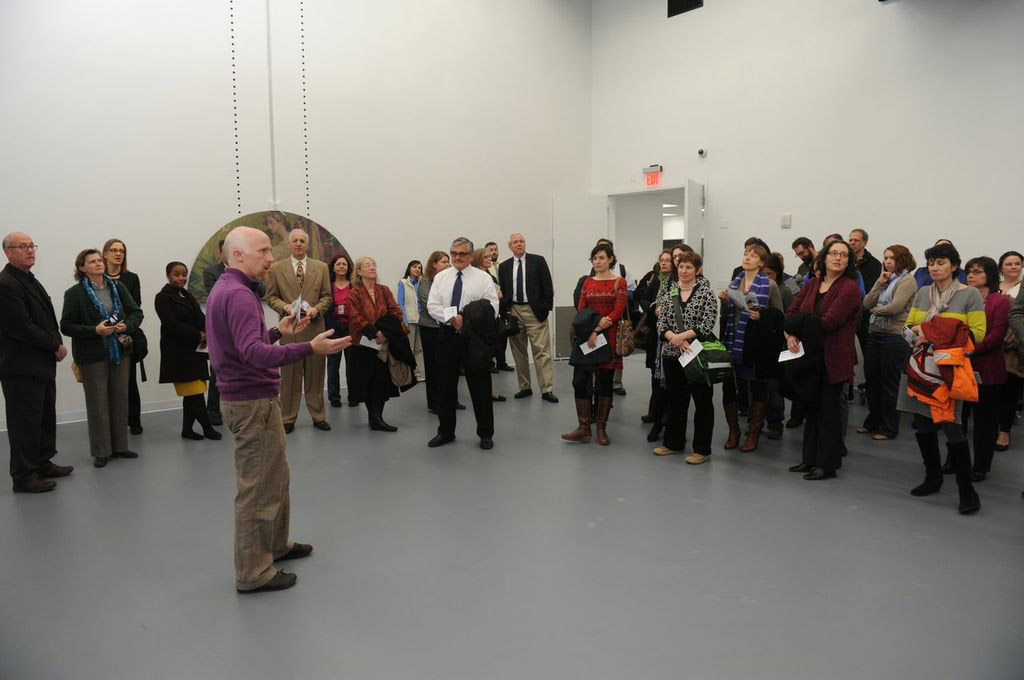The first project in the Imaging Lab is in full swing! Indo-Pacific textiles from the Yale University Art Gallery (YUAG) are being photographed in Studio 2 with a camera mounted on the catwalk. This is unique because it is the first time we have had a studio this large to photography items from this height. The catwalk allows photographers to mount cameras anywhere between 15 feet and 17 feet in the air which allows them to cover a larger area when spreading items out on the floor. Here is a little background information on the project:
Established in 2009, the Department of Indo-Pacific Art oversees the newest collection at the Yale University Art Gallery and has three areas of strength: ethnographic sculpture, ancient Javanese gold, and Indonesian textiles.
The textile collection holds about 600 textiles from Indonesia, mainly collected by Robert Holmgren and Anita Spertus. This group is of exceptional quality and ranks among the finest in any museum. The collection includes particularly superb textiles from South Sumatra, Sulawesi, and Borneo, and it includes rare and unique weavings that reflect the history of Indonesian designs.
The Indo-Pacific textiles were selected to be photographed in their entirety as part of the annual project photography to meet an increasing demand from scholars and the curator for good-quality images. YUAG plans to publish a book on the collection.
Coordinated by the Visual Resources department at YUAG, contract photographer Chris Gardner and a team of 6 Gallery staff are photographing the collection in high-resolution digital format over a seven week period. Once photographed the images will be stored in the YDC2 Content Management Platform and made publically available on the YUAG’s website and through Discover Yale Digital Content. Most all of the objects photographed will also be available for download from the YUAG website as either PowerPoint sized JPEGs or 20MB Tiff files.

Chris Gardner, contract photographer for the Indo-Pacific textile project, makes adjustments to the camera mounted to the catwalk so that he can accurately photograph the textiles laid out on the floor below.

Ben Diebold and Jac Parker from YUAG carefully unwrap the Indo-Pacific textiles and make sure the correct barcodes are associated with the correct textiles before they get photographed.

Jac Parker, from YUAG, carefully unrolls an Indo-Pacific textile onto vinyl dance floor material while removing the acid free tissue paper that was placed between the layers of the fabric.

Chris Gardner and Ben Diebold move the textile into place so that it will be in the right position under the camera to be photographed.

Chris Gardner and Susan Kiss photograph an Indo-Pacific textile using a camera mounted to the catwalk 17 feet in the air.

Chris Gardner and Susan Kiss carefully place the Indo-Pacific textile on the acid free tissue paper so that it can then be rolled up onto the acid free tube for storage. By rolling the textiles, instead of folding them, the textiles remain crease-free.

Some of the textiles are large and need two people to unroll them. Ben Diebold and Elizabeth Solak position the textile so that it will unroll directly under the camera that is mounted to the catwalk above.



















